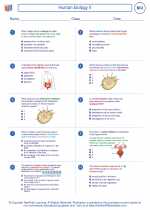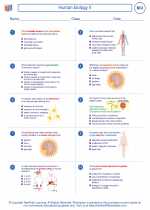Analgesics
Analgesics are a class of drugs that are used to relieve pain. They work by altering the way the body perceives and responds to pain signals. There are several different types of analgesics, including nonsteroidal anti-inflammatory drugs (NSAIDs), acetaminophen, and opioids.
Types of Analgesics
1. Nonsteroidal Anti-Inflammatory Drugs (NSAIDs)
- Examples: aspirin, ibuprofen, naproxen
- Mechanism of action: NSAIDs work by blocking the production of prostaglandins, which are chemicals that promote inflammation and pain.
- Uses: NSAIDs are commonly used to relieve pain, reduce inflammation, and lower fevers.
- Side effects: Potential side effects of NSAIDs include stomach irritation, ulcers, and an increased risk of bleeding.
2. Acetaminophen
- Mechanism of action: Acetaminophen works by inhibiting the production of prostaglandins in the brain, which helps to reduce pain and lower fevers.
- Uses: Acetaminophen is often used to relieve mild to moderate pain and reduce fevers. It is not effective at reducing inflammation.
- Side effects: When taken in high doses, acetaminophen can cause liver damage.
3. Opioids
- Examples: morphine, codeine, oxycodone
- Mechanism of action: Opioids work by binding to specific receptors in the brain and spinal cord, which reduces the perception of pain.
- Uses: Opioids are powerful pain relievers that are often used for severe pain, such as after surgery or for cancer-related pain.
- Side effects: Common side effects of opioids include drowsiness, constipation, and nausea. They also have a high risk of addiction and overdose.
Study Guide
When studying analgesics, it is important to understand the mechanisms of action, uses, and potential side effects of each type of drug. Here are some key points to focus on:
- Understand the differences between NSAIDs, acetaminophen, and opioids in terms of their mechanisms of action and uses.
- Be able to identify common examples of each type of analgesic and their potential side effects.
- Consider the appropriate use of each type of analgesic based on the severity of pain and the presence of inflammation or fever.
- Discuss the risks associated with the long-term use of NSAIDs and opioids, including the potential for gastrointestinal problems and addiction, respectively.
By mastering these concepts, you will be well-prepared to understand the role of analgesics in pain management and their impact on the body.
.◂Biology Worksheets and Study Guides High School. Human biology II
Worksheet/Answer key Human biology II
Human biology II  Worksheet/Answer key
Worksheet/Answer key Human biology II
Human biology II  Worksheet/Answer key
Worksheet/Answer key Human biology II
Human biology II  Vocabulary/Answer key
Vocabulary/Answer key Human biology II
Human biology II  Vocabulary/Answer key
Vocabulary/Answer key Human biology II
Human biology II  Vocabulary/Answer key
Vocabulary/Answer key Human biology II
Human biology II  Vocabulary/Answer key
Vocabulary/Answer key Human biology II
Human biology II  Vocabulary/Answer key
Vocabulary/Answer key Human biology II
Human biology II  Vocabulary/Answer key
Vocabulary/Answer key Human biology II
Human biology II  Vocabulary/Answer key
Vocabulary/Answer key Human biology II
Human biology II 

 Worksheet/Answer key
Worksheet/Answer key
 Worksheet/Answer key
Worksheet/Answer key
 Vocabulary/Answer key
Vocabulary/Answer key
 Vocabulary/Answer key
Vocabulary/Answer key
 Vocabulary/Answer key
Vocabulary/Answer key
 Vocabulary/Answer key
Vocabulary/Answer key
 Vocabulary/Answer key
Vocabulary/Answer key
 Vocabulary/Answer key
Vocabulary/Answer key
 Vocabulary/Answer key
Vocabulary/Answer key

The resources above cover the following skills:
LIFE SCIENCE (NGSS)
From Molecules to Organisms: Structures and Processes
Students who demonstrate understanding can:
Develop and use a model to illustrate the hierarchical organization of interacting systems that provide specific functions within multicellular organisms.
Plan and conduct an investigation to provide evidence that feedback mechanisms maintain homeostasis.